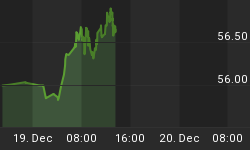The major stock indexes are the wrong place to look
A well-known business magazine recently published a story with this headline:
Stocks: The "Loss" Decade
A disastrous ten years for the stock market ends in just a month. Will the turning of a new decade change investors' luck?
One sentence from the story itself tells you most of what you need to know: "The ten years since Y2K are on track to produce the worst total returns for investors since the 1930s."
Of course, no one should really be surprised by a story that says the stock indexes did poorly over the past decade. That's not news. The facts in the article more or less repeat what our own Elliott Wave Financial Forecast reported last March, complete with this chart:

It's safe to say that this business magazine article is the first of many the media will run before the year's end, as part of their "decade wrap-up" stories. And like this story, most or all those like will share the same basic assumption: stock investors did poorly because the stock indexes did poorly.
And that assumption, dear reader, is erroneous. The truth is far uglier.
Here's what I mean. If you want to know how real stock investors really behave, the major stock indexes are the wrong place to look. Published results from firms like Dalbar and Vanguard consistently show that, over the past 25 years, individual investors and mutual fund shareholders have had average returns that are half (at best) of the annual returns of the broader stock market.
So, for example, in 20 years from Jan. 1, 1989 through Dec. 31, 2008, the S&P 500 showed a 8.35% gain (Dalbar). Over that same period, equity investors showed a 1.87% gain. And if you include the 2.89% inflation rate in those years, investors show a 1.02% loss.
You can shift to a timeframe which excludes the bear market that started in 2007, but it doesn't change the basic story. From January 1984 though December 2002, the Dalbar data shows that equity investors earned an annual average of 2.6%, vs. the S&P 500's 12.2% annual average. The annual inflation rate for period was 3.14%.
What's more, similar studies and surveys also show that most investors are overconfident in the decisions they make. Put another way, they don't even know that they are their own worst enemy.
It can be different for you. Market prices move in recognizable patterns: Those patterns can also reveal specific price levels that help confirm the direction of the trend, or identify the time to step aside. Respecting the price, pattern and trend is the first step toward discipline, instead of yielding to emotions.















